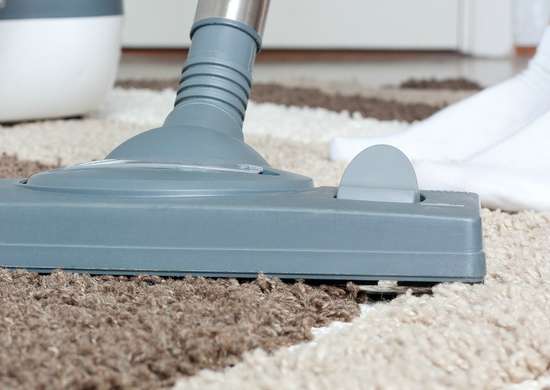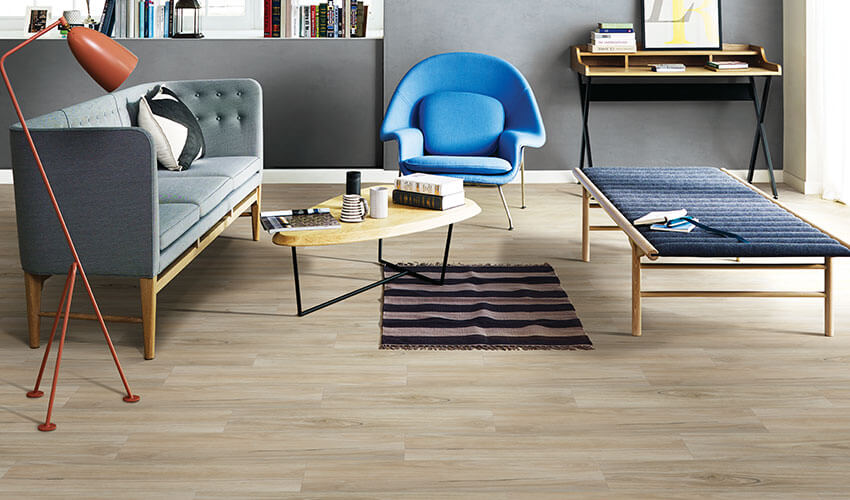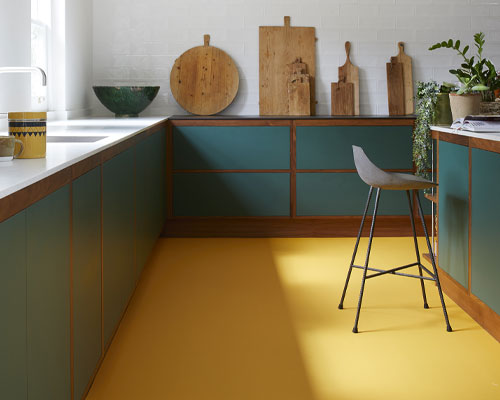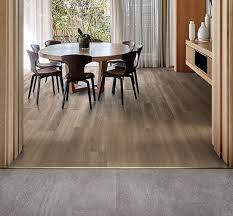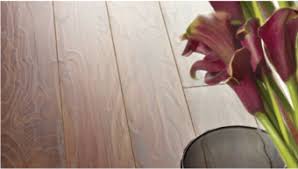How Often Should Carpet be Replaced?
Like most flooring options, carpet doesn’t last forever. But how do you know when it’s time to replace carpet? A few things like the age, wear levels, damages like tears, stains, or smells, and increased allergies can be indicators that it’s time to invest in new carpet. If you’re unsure whether your carpet should be replaced or not, read on to find out more about the signs you should look for when considering replacing carpet.
Age of the Carpet
While carpet has changed over the years, today, its lifespan is usually anywhere from 5 to 15 years. The length of time that a specific carpet lasts depends on the type of carpet, carpet cushion, carpet fibers, and wear and tear the carpet is exposed to. For example, carpet in a spare bedroom where there is little traffic will probably last longer than carpet in a heavily trafficked hallway. Homes with children and pets will see increased carpet wear than homes with quiet lifestyles, so there are many factors to consider. While there’s no set way to determine if your carpet is at the age where it needs to be replaced, there are usually physical indicators that will tell you that it’s time to replace the carpet.
If you want to increase the life span of your carpet, depending on your lifestyle, you should have your carpet professionally cleaned every 18-24 months, vacuum on a regular basis and follow the proper care and maintenance instructions found in your carpet warranty. If you’ve had your carpet for more than 20 years, it’s best to replace it to maintain your home’s indoor air quality and comfort.
Wear, Damage, and Tears
Worn out carpets and carpet cushions can occur for a variety of reasons, and they show wear with tears, damages, and wrinkles. Small tears can sometimes be repaired, but large tears are often damaged beyond repair. Areas of carpet that are heavily trafficked may show wear by their appearance. If your carpet was once a more vibrant color, but now tends to look dirty no matter how much you clean it, it’s probably time for new carpet. Areas in front of doorways are often the first to experience this kind of wear. Carpet can also become faded over time, so if your carpet was once a beautiful, bold color, but now seems dull and worn, you may want to consider carpet options. While carpet fading is not always a necessary reason to invest in carpet, it may be a good option if you have this issue along with another sign of wear.
High traffic areas like entryways, hallways, stairways, and playrooms will also show signs of wear with matting. Matted carpet lays flatter than its original look, and it’s tough to bring matted carpet back to life. In many cases, matted carpet is an excellent reason to invest in new carpet.
Not only can your carpet become worn, but so can the carpet cushion underneath. Wrinkles in your carpet are a good indicator that you need new carpet. Another sign of worn-out padding is uneven carpet. Areas in your carpet that are higher or lower than other areas indicate that your carpet padding needs to be replaced, and so does your carpet.
Stains and Smells
Stains and smells are some of the most common reasons why carpet should be replaced. Whether you have young children or pets or you happen to be the one who makes messes, stains and smells can cause irreparable damages to your carpet.
Some carpet stains can be cleaned easily, but red wine and bathroom accidents may never come out. While you can move furniture to cover them, it’s not always possible to hide areas of your carpet that have severe stains. Professional cleaning can sometimes help remove or dull the stains, but that’s not true in all cases, especially with tough stains like mustard or bleach.
Stains can also cause there to be a lingering odor. When stains seep into the carpet fibers and carpet cushion, they can bring with them unpleasant odors that last for years. Mold and mildew are a top reason to purchase new carpet, as there is no way to remove these odors without replacing the carpet.
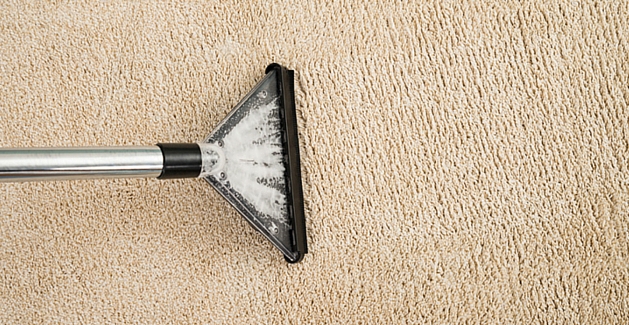
4 ways to make your carpet last longer
Everyone wants to get more for their money -this includes their flooring. Flooring can be expensive to replace so taking steps to keep it looking its best for as long as possible can be a big money saver. It will also add to the beauty of the room. Here are 7 great tips for extending the life of your carpet from a true expert.
1. Vacuum…often
How often? There are varying schools of thought on this. Some say once a week, some say once a week but hit the high-traffic areas twice. Some say once per week per adult and dog (2 adults, 2 dogs =4 times/week)
The answer:
- No kids, no pets: once a week.
- Kids, no pets: twice a week.
- Pets, no kids, 2-3 times per week.
- Kids and pets, 3-4 times per week.
2. Check your shoes at the door(s)
Everyone drags in loads of dirt from the outside on their feet. It is unavoidable. The best way to stop it; take off your shoes. There are tons of super cool ways to store you and your guest’s shoes.
3. Get a door mat(s)
It may seem like an obvious suggestion, however the type of door mat plays a very important role. Don’t go cheap when it comes to door mats. The cheap ones will eventually add to the dirt in the house because they only wipe off what’s on the surface of your shoes and leave it there for the next person to track in.
4. Have your carpets professionally cleaned at least once per year
A professional carpet cleaning using a truck-mounted hot water extraction system every year (sometimes more depending on…kids, pets, etc.) will extend the life and luster of your carpet more than any single suggestion on the list (except for the vacuuming).
Why specifically truck-mounted hot water extraction? Heat and suction! Portable cleaning units don’t come close to generating the amount of heat required to get a good cleaning and once that solution has done its work, you need lots of suction to extract the water otherwise your carpets will be wet for days.

How Do I Know When It’s Time To Replace My Carpet?
They’re a part of your home, witnessing everything from the pitter patter of tiny feet to wine spills, or mud tracked in from soccer practice. However, sooner or later, you have to decide when it’s time for your residential carpet to be replaced.
As you are seeing your carpet every day, it can be hard to notice the little changes over time. So to help you evaluate the state of your flooring, we’ve put together our top things to look out for when deciding if it is time to replace your carpet.
Here are a few of the signs that your carpet might need replacing
You Can No Longer Hide The Stains
A home is not meant to be looked at, it’s meant to be lived in. While this is all well and good when it comes to making a space your own, it can also mean that your carpet takes a hit over the years with accidental spills and stains. Fortunately, if you act fast enough, many stains can be removed or minimised, but some stubborn patches can be near-impossible to get rid of, especially when you use DIY carpet cleaning methods.
Over the years, this results in finding more creative ways to disguise stains from decorative rugs to indoor plants, but if you’re getting to the point where you’re running out of rugs to cover up wear and tear, it might be time for a change.
It Smells, Even After Cleaning
There’s nothing worse than coming home to smelly carpet. Even if you get rid of the visible stain, there are some substances where it’s harder to erase the evidence. This is often the case for homeowners with pets – even if you spot clean little accidents straight away, sometimes the smell can remain, meaning that the odour may have penetrated more deeply into the carpet fibres, or into the padding.
It Has Bald Patches Or Matting
Carpets see a lot of use over the years – especially if you have kids who like to practise their cricket bowling down the corridor, or who like to use the living room for dance rehearsals. Over time, this can result in your carpet wearing thin or matting, especially in high-traffic areas. Polyester carpets tend to be slightly more prone to matting, and often cannot be restored.
It’s Lost Its Cushion
One of the key benefits of choosing carpet over other flooring options is the soft cushioning beneath your feet. The layer of cushion under the surface of your carpet is what makes this possible, helping with both comfort and acoustics. Uneven carpeting, as well as carpet that feels like you’re walking on unforgiving concrete can be indicators that the condition of the padding isn’t what it should be.
Dampness
Water damage is a carpet’s worst enemy, leaving stubborn stains as well as a lingering damp smell. Dampness is particularly common in Australia’s more humid regions, such as tropical Queensland. Keep an eye out for possible signs of mould and mildew, as well as a stale odour – this can be a sign that it’s time to replace your carpet.

How to Care for Your Carpet if You Have Pets at Home
When you own pets and have carpet in your home, it can be difficult to keep the carpet looking clean all of the time. Cats are generally cleaner than dogs since most cats are indoor animals. They do still shed and spread pet dander, so vacuuming twice per week is suggested. It is also ideal to have a carpet with a medium tone and that has a few colors woven in to help hide some pet dirt from showing.
Regardless of which pet you have, it’s never easy getting the pet smell out of your carpet. Let’s explore a few tips that just might help.
Purchase Stain Resistant Carpet
If you are able, stain-resistant carpet is always the way to go. Consider this option if you are replacing the carpeting or wish to carpet a wood or tile floor. This type of carpet is often more costly but also lasts for an extended period of time. Stain-resistant carpet already has a protective layer applied to the fibers. There is no need for scotch guarding practices as it can withstand being steam-cleaned, vacuumed and spills without losing too much of its integrity.
Scotch Guard Non-Stain Resistant Options
If you have carpet that is a few years old it is best to scotch-guard the carpets. This will put a protective guard on the carpet. It will need to be repeated after a period of time to help the fibers maintain their structure and help protect additional stains from being possible. You should have this done professionally to ensure that every fiber is treated. Missing a spot by doing it yourself can cause stains to get under fibers that are treated. This can cause stains that do get past the scotch guarding to be harder to get out.
Cleaning Pet Urine
Pet urine is one of the toughest things to battle when it comes to carpet care. In order to get accidental urine spots out of the carpet, you need to catch it rather quickly. Get several paper towels first and step on them, a few at a time, with shoes on. This will help you to pull up the urine without spreading it. Continue to do this until the paper towels come up nearly dry. Make a mixture of 1-teaspoon of ammonia and 1-cup of water. Spray this on the area and let it sit for 5-minutes. Use a stiff brush and make small circular motions from the inside of the spot outward. Use a wet/dry vacuum to pull up the rest of the area. This should prevent the urine from staining and should pull all of it up from the carpet.
Keep your Pet’s Nails Trimmed
The length of your pet’s nails can cause damage to a carpet. When a pet gets excited and runs around or scoots across the carpet, it can snag the strands of material. This can cause an unraveling effect that would eventually leave spots that are bare, disheveled looking or less fluffy than the rest of the carpet. When trimming your pet’s nails it is also ideal to use a pet nail file on them. This removes the rigidity left to make the nails feel smooth again. This also helps to protect carpet and hardwood floors as well.
Use a Hardwood or Tile Entrance
After taking the dog for a walk when it has been raining or snowing, a hardwood or tile floor entrance with a rug that they can walk over first is ideal. This prevents wet and muddy feet from making prints on the floor and prevents the mud from getting on the carpet. Some dogs will play in mud or splash a little due to their size. Keep a towel handy, next to the entry door, to wipe them off. Some types of mud can be more difficult to remove from carpet than others.
Use a Carpet Powder for Homes with Pets
There are several carpet powders for homes with pets available. Sprinkle it on generously and allow it to sit for the amount of time suggested on the package. Vacuum thoroughly by going over the entire carpet twice. The first pass will pull up the powder and topical particles. The second pass, which should be performed in a slower motion, gets down further to pull up hair, dander and other particles that are deeper into the fibers.
